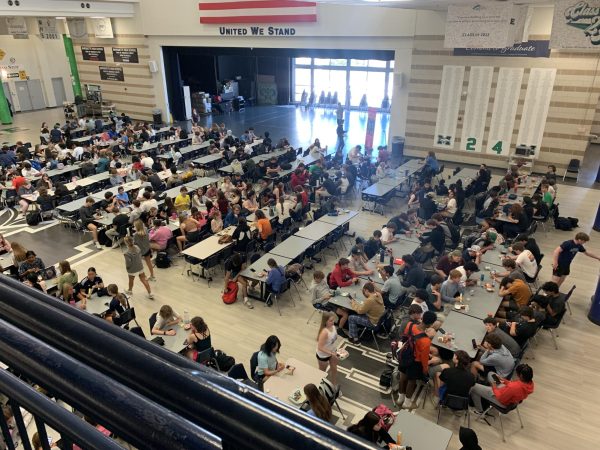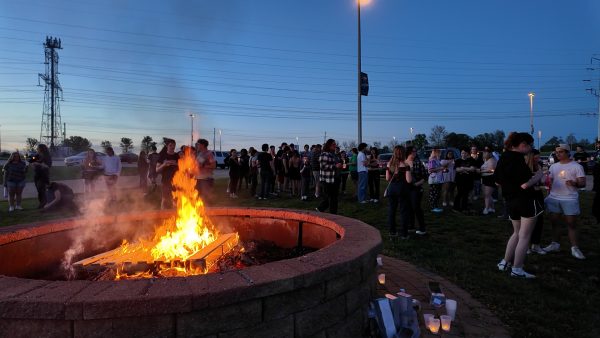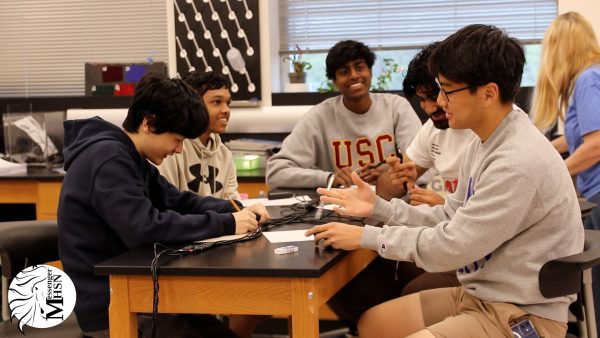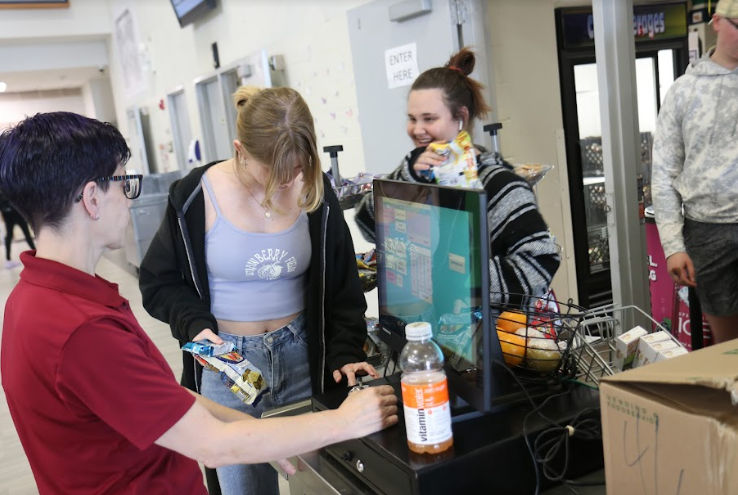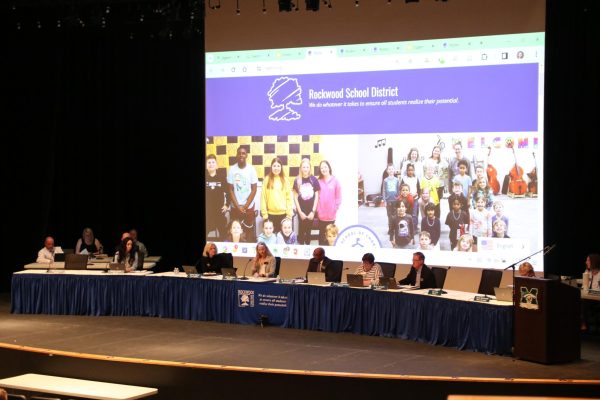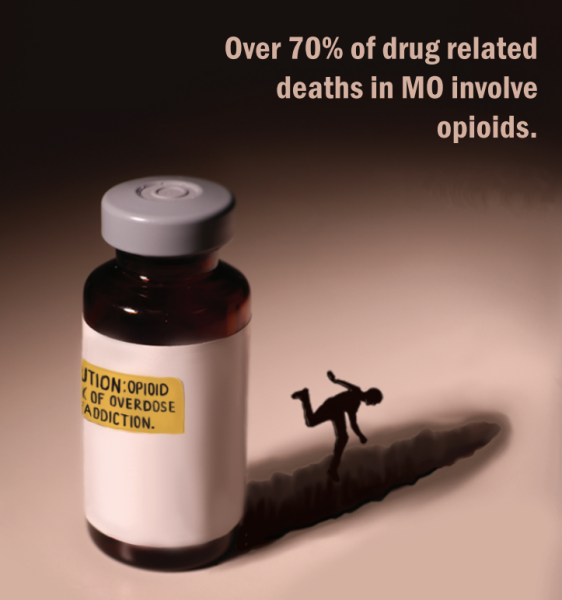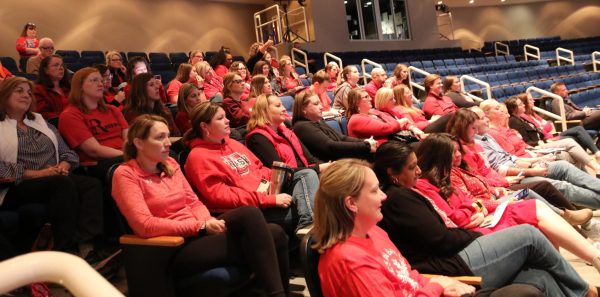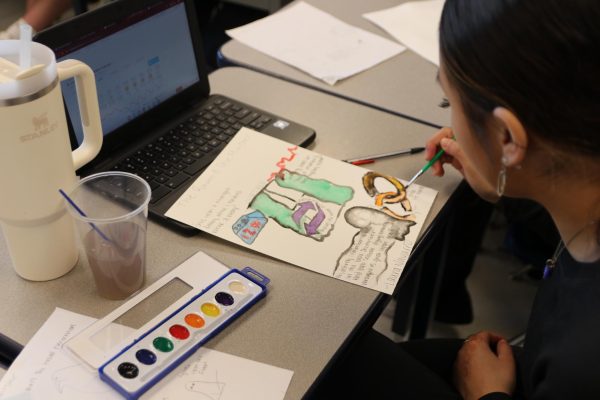MHS to Return to Paid Lunches Next School Year
Media by Willem Hummel
Meg Davis checks out Reese Foremen and Nia Ovcharova’s lunches to them.
Thursday, June 2 will be the last day free lunches will be available to all students. Next school year students will once again need to pay for food at school.
Madison Shultz, sophomore, is a working student who will most likely need to pay for her own lunches when the program is no longer available.
“It wouldn’t affect me that much because obviously school lunch isn’t going to be $20 every day,” Shultz said. “But, it definitely would cause me to put more money aside just because I have budgets for certain things such as insurance and gas.”
Shultz said she does think lunches should improve in quality proportional to the price.
We’re just serving what we can get. Next year’s menus and service will depend on how many employees we can get over the summer and what food is being produced by manufacturers.
— Carmen Fischer
“The quality of food should improve if kids are paying because at that point the money that we are gaining should be put toward better food,” Shultz said. “I know some kids really don’t have options for food to eat at school because of allergies, and they don’t have many choices.”
During the 2021-22 school year, RSD operated off of the Seamless Summer program instead of the National School Lunch program used pre-COVID. The Seamless Summer program allowed districts across the U.S to offer free lunches to their students because of the effects of COVID-19, Carmen Fischer, Director of Child Nutrition services, said.
When the program was set in place, some students, like Shultz, noticed a difference in the quality of lunches, and a huge factor that caused this was supply chain issues as producers discontinued food products, Fischer said.
“We’re just serving what we can get,” Fischer said, “Next year’s menus and service will depend on how many employees we can get over the summer and what food is being produced by manufacturers.”
Before COVID began there were different themed lines: Mexican, Chinese, American and Italian.
In previous years there would be 18-19 employees, Fischer said, but this year there are only 4 regular ones making it hard to run so many lines.
The quality of food should improve if kids are paying because at that point the money that we are gaining should be put toward better food.
— Madison Shultz
During an average pre-COVID year, 8,000 to 9,000 students would get school lunches in RSD a day, but because of the free lunch program, the number increased to 13,000-14,000 students, Fischer said.
“I normally wouldn’t be out serving, but we’re so short I have to be a cashier,” Fischer said.
Ryane Little, a parent volunteer at the School Store, has two children in RSD and has saved nearly $700 since the free lunch program began.
She said that prior to the program, her girls used to take lunches from home instead of getting them from school, but they reverted to getting school lunches when the program began.
Ramen has been especially popular in the School Store lately because they sell for even cheaper than a purchased school lunch, Little said.
“It was a good program to have, and I think it was worth having, especially when a lot of people were out of work after COVID,” Little said. “But, now that everything is going back, I guess for lack of better terms ‘normal,’ I think it would be good to go back to having free lunches for those that actually qualify for them.”
Your donation will support the student journalists of Marquette High School. Your contribution will allow us to purchase equipment and cover our annual website hosting costs. You may become a PATRON by making a donation at one of these levels: White/$30, Green/$50, Blue/$100. Patron names will be published in the print newsmagazine, on the website and once per quarter on our social media accounts.

Willem Hummel, Senior is a News Editor for the Marquette Messenger. This is his third year on staff, he has been involved in the Track Team, and Cross...



